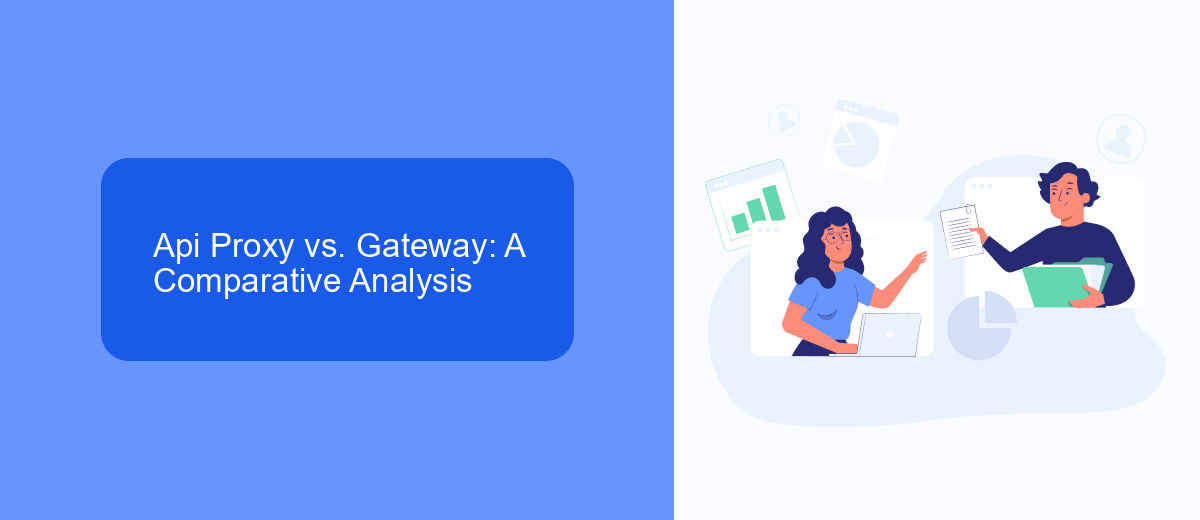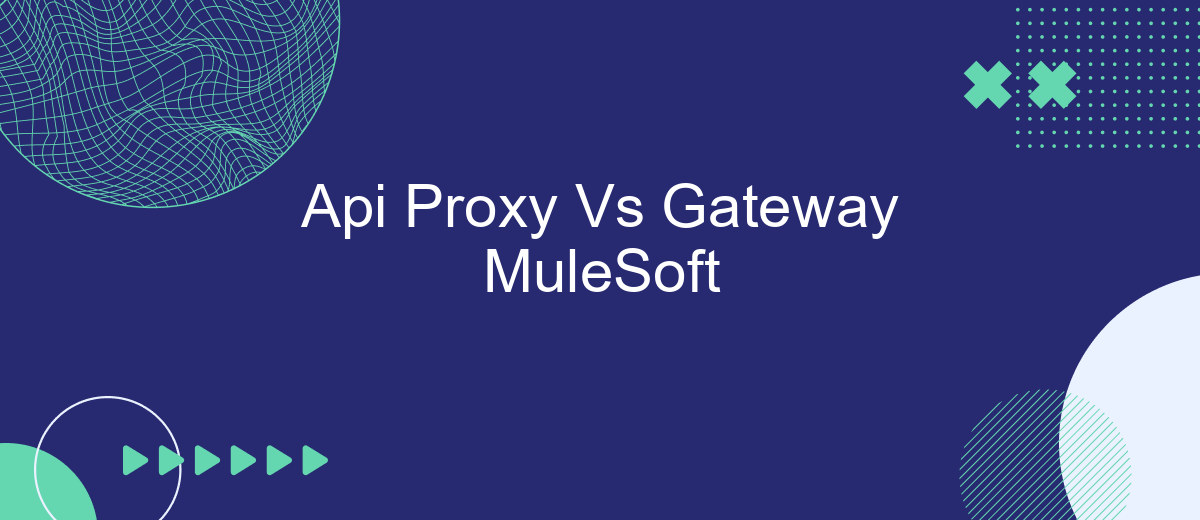In the realm of API management, choosing between an API Proxy and a Gateway can significantly impact your integration strategy. MuleSoft, a leading integration platform, offers robust solutions for both. This article delves into the distinctions and use cases of API Proxies versus Gateways within the MuleSoft ecosystem, helping you make an informed decision for your enterprise needs.
Introduction
In the rapidly evolving landscape of digital transformation, businesses are increasingly relying on APIs to streamline operations and enhance connectivity. Two crucial components in this ecosystem are API Proxies and API Gateways, both of which play pivotal roles in managing and securing APIs. MuleSoft, a leading integration platform, offers robust solutions for both API Proxies and API Gateways, enabling seamless integration and data flow across various applications and services.
- API Proxy: Acts as an intermediary between client requests and backend services, providing basic security and monitoring.
- API Gateway: Offers a more comprehensive suite of features, including rate limiting, authentication, and analytics, making it ideal for complex, large-scale integrations.
Understanding the differences between API Proxies and API Gateways is essential for making informed decisions about your API management strategy. Services like SaveMyLeads can further simplify the integration process by automating data transfer between various platforms, ensuring that your business operations run smoothly and efficiently. Whether you are a small business or an enterprise, choosing the right API management tools can significantly impact your operational success.
Api Proxy vs. Gateway: A Comparative Analysis

API Proxies and Gateways serve distinct but complementary roles in managing API traffic. An API Proxy primarily acts as an intermediary, forwarding client requests to the backend services without adding much logic or functionality. It is suitable for simple use cases like monitoring traffic, enforcing basic security policies, and translating protocols. On the other hand, an API Gateway offers more advanced features such as request routing, load balancing, rate limiting, and even orchestration of multiple services. It is more suited for complex environments where multiple services need to be managed and integrated seamlessly.
When it comes to setting up integrations, tools like SaveMyLeads can be invaluable. SaveMyLeads simplifies the process of connecting various services, allowing businesses to automate workflows without extensive coding. This can be particularly useful when using an API Gateway, as it often requires integrating multiple services and managing their interactions. By leveraging SaveMyLeads, organizations can streamline their API management processes, ensuring that both API Proxies and Gateways function optimally within their infrastructure.
Advantages and Disadvantages

When comparing API Proxy and Gateway in MuleSoft, it's essential to consider both their advantages and disadvantages to determine the best fit for your integration needs.
- Advantages of API Proxy:
- Simplifies API management by handling traffic routing and basic security.
- Quick to set up and requires minimal configuration.
- Cost-effective for managing simple API requests.
- Disadvantages of API Proxy:
- Limited in advanced security features and policies.
- Not suitable for complex integrations requiring orchestration.
- Lacks comprehensive monitoring and analytics capabilities.
- Advantages of API Gateway:
- Offers robust security features, including threat protection and OAuth support.
- Supports complex integrations with features like load balancing and service orchestration.
- Provides detailed analytics and monitoring for better insights.
- Disadvantages of API Gateway:
- More complex to set up and configure compared to API Proxy.
- Higher cost due to advanced features and capabilities.
- Requires more resources and expertise to manage effectively.
In conclusion, choosing between an API Proxy and an API Gateway in MuleSoft depends on your specific needs. For simpler, low-cost solutions, an API Proxy may suffice. However, for more complex integrations requiring advanced security and monitoring, an API Gateway is the better choice. Tools like SaveMyLeads can further simplify the integration process, making it easier to connect various services and automate workflows efficiently.
Use Cases and Best Practices

API Proxies and Gateways serve distinct purposes in managing and securing API traffic. An API Proxy acts as an intermediary, forwarding requests to the backend services while providing features like rate limiting, caching, and basic security. On the other hand, an API Gateway offers a more comprehensive solution, handling tasks such as request routing, composition, and protocol translation.
Use cases for API Proxies include scenarios where you need to quickly expose backend services with minimal configuration. They are ideal for simple use cases requiring basic security and monitoring. API Gateways are better suited for complex integrations, where you need to manage multiple microservices, enforce policies, and ensure scalability.
- API Proxy: Quick exposure of backend services
- API Gateway: Managing microservices architecture
- API Proxy: Basic security and rate limiting
- API Gateway: Advanced routing and policy enforcement
When setting up integrations, tools like SaveMyLeads can streamline the process by automating data transfer between various platforms. This is particularly useful when using an API Gateway to manage multiple services, as it ensures seamless data flow and reduces manual effort. Always consider your specific requirements and choose the appropriate solution to optimize performance and security.
Conclusion
In conclusion, both API Proxy and API Gateway have their unique advantages and use cases in the MuleSoft ecosystem. API Proxies are ideal for scenarios where you need to enforce policies and monitor traffic without altering the underlying services. They are lightweight and easy to implement, making them suitable for straightforward API management tasks. On the other hand, API Gateways offer a more comprehensive solution, providing advanced features like load balancing, rate limiting, and security enhancements, which are crucial for complex and large-scale integrations.
Choosing between an API Proxy and an API Gateway depends largely on your specific needs and the complexity of your API landscape. For businesses looking to streamline their integration processes, services like SaveMyLeads can be invaluable. SaveMyLeads simplifies the automation of data flows between different platforms, ensuring seamless and efficient integrations. Ultimately, understanding the strengths and limitations of each option will help you make an informed decision that aligns with your organizational goals and technical requirements.
FAQ
What is the primary difference between an API Proxy and an API Gateway in MuleSoft?
When should I use an API Proxy instead of an API Gateway?
How does MuleSoft facilitate the use of API Gateways?
Can I use both API Proxy and API Gateway together in MuleSoft?
What are some common use cases for implementing an API Gateway in MuleSoft?
SaveMyLeads is a simple and effective service that will help you automate routine tasks and optimize business processes. Stop wasting time uploading leads from Facebook manually – you can do it automatically, saving a lot of time and money. Eliminate routine from workflows and achieve more with minimal investment of money, effort and human resources.
